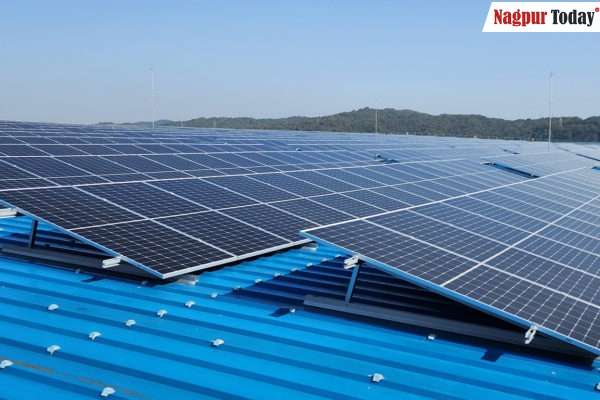
In the domain of solar innovations, progress is both ground-breaking and subtle. From solar panels featuring nanowire technology to rooftop solar panels, the spectrum of innovations is diverse as well as promising. Flexible, thin solar panels have now become real inventions. These state-of-the-art innovations bring us closer to a future where clean energy becomes the norm.
Researchers have noticed that more and more people and companies are concentrating on sustainable energy sources in the last few years. Companies are adjusting to these significant changes by using solar and wind energy in order to lower operating costs and promote environmentally responsible operations. One such renewable energy source that has the ability to provide clean energy at a cost less than that of regular electricity is solar power. The greatest approach to support the RE100 community is to embrace solar power.
With PPA, installation, upkeep, and general implementation have all become much simpler. With the help of these contracts, you may satisfy your power needs while lowering your carbon footprint by entering into a long-term arrangement with a sustainable green energy provider. And there are no up-front expenses for any of this. You also get to save a lot of money on energy costs. We’ve outlined what you need to know about rooftop solar, including its advantages, installation, upkeep, and workings, to help you grasp the idea. Let’s examine this.
What is a Solar Rooftop?
Solar roofs are installed on the roof of your business, as the name would imply. These solar panels harness solar energy, transform it into electrical power, and light up your room.
India receives sunshine for 300 days a year, or the bulk of the day, making solar energy a great choice for anyone looking to transition to sustainable energy sources. India has made the transition to renewable energy a feasible choice due to its clean sky and enough sunshine. India has currently deployed 11 GW of rooftop solar capacity. The number is expected to rise rapidly, though.
As a result of the photovoltaic effect, which occurs when sunlight passes through solar panels mounted on a building’s rooftop, rooftop solar systems are also known as photovoltaic (PV) systems. Soaking up the sunshine is the job of the photovoltaic cells, which are utilized to make solar panels. All of your electrical equipment is powered by the generated energy, which passes via the building’s electrical system.
Grid system installation is another alternative, albeit it’s not required. When the amount of sunshine reaching your solar panels is sufficient to generate more electricity than your business building uses in a given day, the extra energy is sent back into the grid. When there is not enough sunshine, like during the monsoon and the winter months, this energy may be employed.
Reasons You Should Consider Solar Rooftop
Adding solar panels to your building’s roof is the best way to embrace the transition to sustainable and ecologically friendly electricity production. Because it doesn’t need a significant upfront investment, it is an excellent choice for entrepreneurs with little resources. It is possible for you to enroll in Power Purchase Agreements (PPAs), which bind you to a long-term, fixed-rate contract (about 25 years).
Let’s examine some typical justifications for you to consider making the move to rooftop solar.
● Renewable Energy: A switch to solar electricity might be a significant step in reaching your RE100 objectives if you are going green or adopting a sustainable lifestyle. In contrast to natural gas and other fuels, solar energy has no upper limit. It is a limitless resource that is plentiful everywhere on the earth.
● Support the Environment: Industries that depend on large quantities of electricity for everyday operations might save money and energy by switching to renewable energy. You can cut down on pollutants and greenhouse gas emissions from coal-fired power plants by making the move to solar energy.
● Energy Independence: You have more control over your energy costs if you own solar panels that produce power. You may secure clean and green energy for years by entering into a Power Purchase Agreement with a reliable power supplier, as opposed to depending only on the conventional unstable electricity market.
● Cost-effective: Installing a rooftop solar system is a wise choice if you are based in an area with high energy costs and plenty of sunshine. It’s especially beneficial for companies whose routine industrial activities need a significant quantity of power consumption. Making the switch to this clean and renewable energy may significantly reduce your monthly costs if you operate heavy gear and have a big area with several lights and electrical appliances.
Installation Process
The installation and configuration of the rooftop solar system will be handled by Your Power Producer. An outline of the installation is provided here.
The Solar Panels’ Mounting: The brackets are positioned on your rooftop to begin the installation process. The solar panels are held and positioned more securely by these brackets. For optimal absorption of sunlight, the panels are oriented towards the north and placed at an angle of between 18 and 36 degrees.
Installation of the Panels: A series or parallel wiring scheme is used to mount the solar panels on the brackets. To raise the voltage output, both need to connect the panels’ positive and negative terminals.
Connecting to the Inverter: The solar panels’ wire is thereafter linked to the inverter’s input port. This may be accomplished in one of two ways: either by using a combiner box that contains all of the wires or by connecting each solar panel string to the system independently. Prior to connecting the panel strings to the inverter, it is used to condense them.
Power Production: The building’s electrical supply is dispersed across it. Each electrical appliance is powered when the electrical switch is turned on because the inverter’s output terminals deliver electricity to them.
Conclusion
For business usage, rooftop solar is a wise and economical choice. Compared to standard utility systems, it allows companies to use solar energy and satisfy their electrical needs at a far lower cost. So why hold off? Choose Sunsure to sign up for green and clean energy; they are a dependable, affordable, and sustainable group of power producers.




















